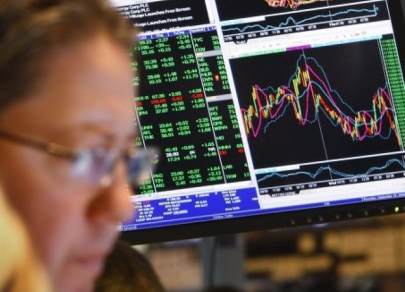FX.co ★ What are the prospects for investors in 2018
What are the prospects for investors in 2018
Geopolitical tensions
The results of the outgoing year demonstrate that due to the prolongation of the sanctions regime, there will be no rapprochement between Russia and the United States in 2018. In addition, a constraint of the development of bilateral relations will be the introduction of a ban on the purchase of Russian bonds of a financial loan (FLB) and derivatives on them. The issue about the US tax reform is still unclear.
The nuclear program of the DPRK, the deterioration of the situation in the Middle East and Turkey and the political climate in Europe, elections in a number of developing countries can also affect the political landscape.

Oil surprises
With regard to the oil market in 2018, the prolongation of the OPEC+ agreement should provide the same serious support to the quotations of energy assets as in the current year.
As the International Energy Agency (IEA) forecast, the market may reach a balance of supply and demand against the expected acceleration of the global economy.
The rising tension in the Middle East, if it continues to take place, will have a positive impact on the increasing oil prices, to $50-55 per barrel of Brent oil. Further growth of oil production in the US will strengthen the negative impact on the market.

The economic agenda
Despite the positive trends which the economic growth in Russia has shown this year (1.6% year on year), the dynamics of GDP growth can not be called stable.
In 2018, the previous drivers of growth will continue, but we cannot speak of the accelerating GDP growth (below 2%), while inflation rate will rise more rapidly (from 2.4% to 4%). In so doing, a moderately tight budget policy and a gradual reduction in the Central Bank's key rate will remain a stabilizing factor.

Currency debt
The continuing interest in risk, stimulating monetary policy of the global regulators, as well as a relatively high dollar rate have driven down the yields of Russian Eurobonds this year.
Given the predictable nature of the global regulators' policy, the moderate growth of Eurobond yields is more likely to occur than futher price inflation. It is expected that the US Federal Reserve System (FRS) will increase the rate by 1 percentage point to the range of 2-2.25% by the end of 2018.

Avoiding the carry trade strategy
The reduction in the key rate by the Central Bank of the Russian Federation (up to 8% in the current year, and by one more percentage point in 2018), an attractive real interest rate (5.9% in 2017 and 2-3% at end of 2018) will have a positive impact on the public debt in the coming year. The strengthening of the ruble will be replaced by a moderate devaluation of the ruble against the US dollar.
The attractiveness of the carry trade strategy will decrease. The opportunities of the further growth of the market with ruble fixed-income instruments depend on the regulator's plans to move toward neutral monetary policy.

Exchange stagnation
The Russian market still does not have any preconditions for an active growth.
The data on key multiples (P/E, EV/EBITDA, etc.) and the MICEX and RTS stock indices in the first half of 2017 indicate a neutral outlook for the stock market perspectives in the medium term.
Therefore, to date, the Russian market continues to remain one of the most underappreciated among the developing ones.






















